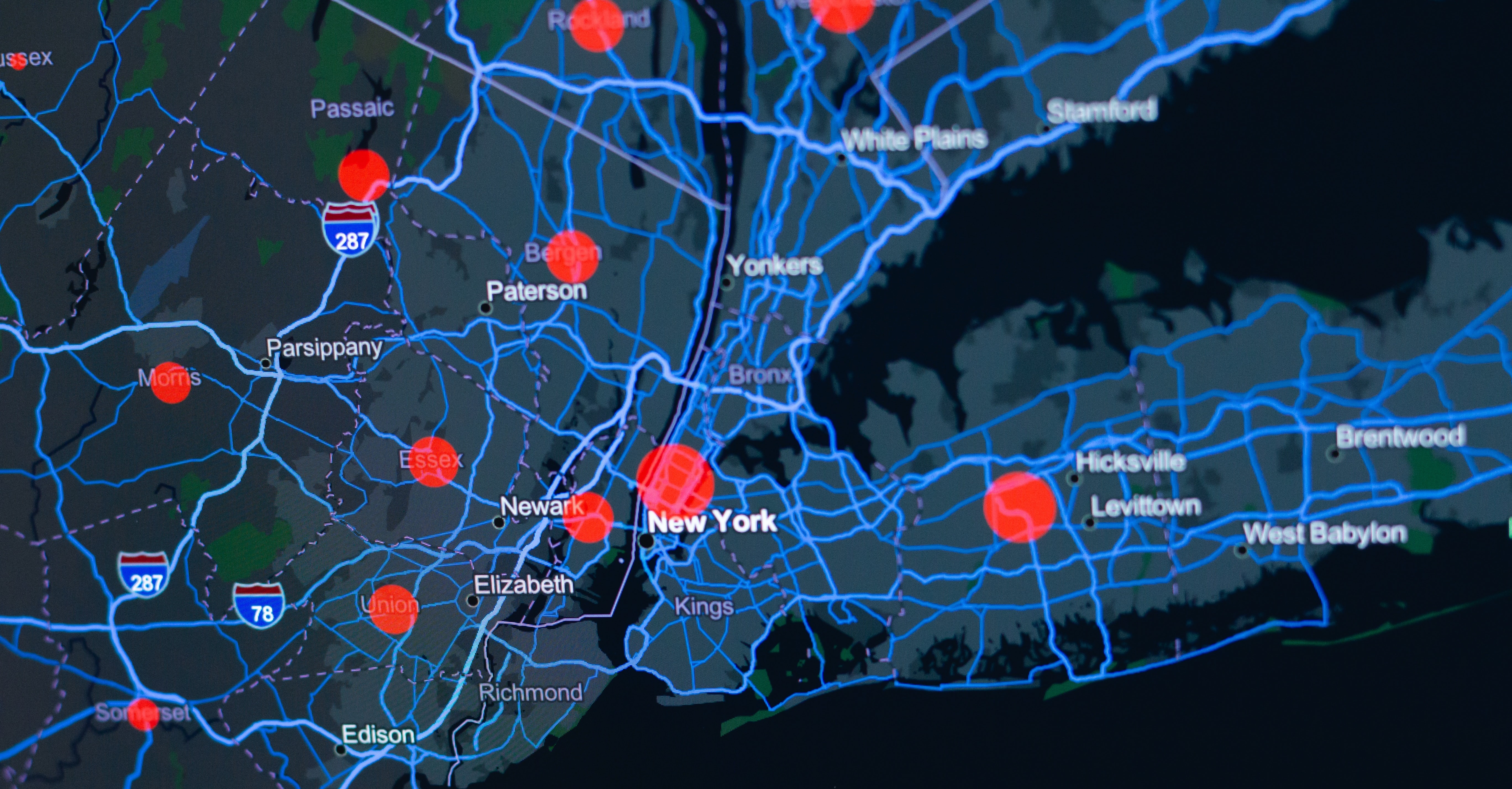Newsletter
When COVID-19 spread throughout the world, Italy swiftly became one of the largest hotspots. As the number of cases rose in Italy, another trend became apparent; as the coronavirus pandemic escalated, air pollution declined. In northern Italy, one of the most polluted areas in Europe, nitrogen dioxide levels dropped dramatically. This change was particularly evident over Po Valley, as identified through satellite imagery from agencies such as NASA and the European Space Agency (ESA).

The image on the left shows pre-coronavirus levels of nitrogen dioxide over Europe, with a significantly high amount over northern Italy. The image on the right shows NO2 levels at the beginning of March, when the drop in NO2 was first observed. Note: images via the ESA.
A Note About Nitrogen Dioxide
NO2 is part of a larger group of seven air pollutants known as nitrogen oxides (NOx), and it is often formed through fuel combustion from vehicles. With a reddish-brown color, NO2 can increase asthma cases, reduce lung functioning, and create other air pollutants.
Despite the welcome reprieve, consensus in the scientific community was almost immediate: once the COVID-19 shutdowns are over, air pollution will go back to the status quo. However, what would happen if post-pandemic air pollution levels remained low? How many lives could we save if we secured a permanent reduction in air pollution over Lombardy, in particular?
Methodology & Results
Hoping to address this question, we needed two sets of data: local health data and air quality data. For health data, we looked to the Italian National Institute of Statistics for regional mortality rates and population data, which are available on their website here.
Utilizing air quality data from monitoring stations in the region, we gathered data from each province in Lombardy except for Sondrio (which did not have air quality data available). We chose to focus on nitrogen dioxide, specifically, because the data coverage was the best out of the pollutants monitored in the region.
Then, we calculated an annual average NO2 level from March of 2019 to the end of February 2020, before the improvements in NO2 were observed, and a “COVID-19 average” from March of 2020 through to May 20th, when the shutdowns started improving air quality. These averages are listed in the table below.
NO2 Pollution Comparison Pre- and Post-COVID-19
| Province | Annual NO2 Average (μg/m³) | COVID-19 NO2 Average (μg/m³) |
| Milan | 34.875 | 25.302 |
| Lodi | 23.543 | 18.018 |
| Brescia | 27.713 | 17.645 |
| Pavia | 20.368 | 16.026 |
| Bergamo | 26.193 | 15.581 |
| Mantua | 20.548 | 15.700 |
| Varese | 24.592 | 15.798 |
| Como | 27.192 | 14.527 |
| Lecco | 21.585 | 15.002 |
| Cremona | 24.840 | 19.062 |
| Monza and Brianza | 41.060 | 25.567 |
| Average | 26.592 | 18.021 |
For each of the 11 provinces we profiled, the annual NO2 average was much higher than the COVID-19 average. NO2 levels were about 32% lower during the quarantine in Lombardy than pre-COVID-19 levels. However, if we learned anything from our previous study on NYC’s air pollution, this difference could be seasonal, and a causational relationship between COVID-19 and NO2 levels in Lombardy, Italy is not necessary for the purposes of this study.
One factor to keep in mind is the hyper-local nature of air quality. Even though we broke down the data into province-level averages, these are more rough estimates to illustrate a trend rather than definitive or predictive air quality values. Actual air quality will, of course, vary dramatically in different cities and neighborhoods.

Air pollution in Milan, Italy remains a significant health threat.
The Impact
Now that we have our air quality data, it’s time to evaluate how these changes impact people in the region. To estimate the human cost of NO2 pollution in Lombardy, we utilized AirQ+, an estimation software offered by the World Health Organization. AirQ+ enables us to estimate how many premature, or avoidable, deaths were caused by air pollution in a given population.
As with any estimation tool, there are deliberate simplifications in order to run the model. The calculations in AirQ+ are based on methodologies and concentration-response functions established by epidemiological studies, with preset relative risk values to set the upper and lower bounds for the calculation.
By setting the COVID-19 average as the cut off value, we created a long-term mortality impact assessment for each province. The model calculates how many lives could be saved in the long term should air pollution remain at COVID-19 levels. The results are summarized in the table below.
Long-Term Premature Deaths Due to Pre-COVID-19 NO2 Pollution
Note: the columns labeled "Lower" and "Upper" provide a range of possible values. The column labeled "Central" provides a single value that indicates the most likely number.
| Province | Central | Lower | Upper |
| Milan | 1165 | 551 | 1780 |
| Lodi | 51 | 24 | 78 |
| Brescia | 472 | 223 | 720 |
| Pavia | 120 | 56 | 184 |
| Bergamo | 419 | 198 | 639 |
| Mantua | 90 | 42 | 138 |
| Varese | 322 | 152 | 492 |
| Como | 303 | 144 | 462 |
| Lecco | 87 | 41 | 134 |
| Cremona | 94 | 44 | 144 |
| Monza and Brianza | 491 | 234 | 745 |
| Total | 3614 | 1709 | 5516 |
As we can see from the estimates, if COVID-19 nitrogen dioxide levels become the new status quo, we could save between 1,709 and 5,516 lives in the Lombardy region. Also, keep in mind that this only considers nitrogen dioxide, not particulate matter, carbon monoxide, ozone, or other air pollutants. Likewise, these results do not reflect the impacts that higher levels of NO2 can have on particle pollution or ozone.
What COVID-19 Reveals About the State of the World’s Air
Around the world, COVID-19 is exposing faults in our health and healthcare system. For example, in the American South, COVID-19 death rates are higher than the rest of the country because of an underlying unhealthy population, as well as a deficient number of intensive care units in the region. In northern Italy itself, COVID-19 has had a staggering impact on the elderly population, with nursing homes particularly vulnerable to local outbreaks.
With a global pandemic going on, it may seem odd, or even callous, to pose these kinds of air pollution questions. After all, we can worry about air pollution once this is over, right?

Unfortunately, we can’t. In April, scientists found a correlational relationship between air pollution exposure and COVID-19 death rates, specifically in Italy. Additional studies found a similar link to COVID-19 in the U.S. Health and air quality are fundamentally connected, and we can’t tackle health-related issues without addressing air pollution.
In each of the provinces we discussed (aside from Monza and Brianza), annual NO2 averages were below the World Health Organization’s recommended limit. In other words, they are deemed safe. With air quality, though, “good enough” is not an option. With about an 8 μg/m³ reduction in only NO2 air pollution, we would save around 3,614 lives, not even considering the impacts air pollution has on COVID-19 mortality rates. If anything, the coronavirus pandemic demonstrates the economic and human costs created by an unhealthy population, and doing our best to stop air pollution will have innumerable benefits.
If you find this post helpful, we recommend you read on this post below -
Data Study: Did the COVID-19 Pandemic Reduce PM2.5 Levels in New York?






.png?width=200&height=148&name=Menu%20C%20(2).png)

.png?width=307&height=228&name=Menu%20-%20D%20(1).png)
.png)




